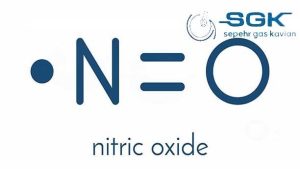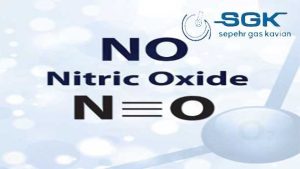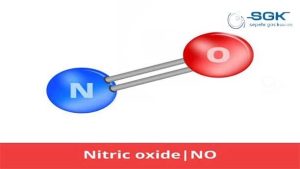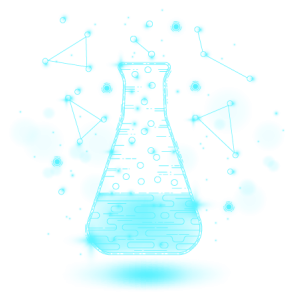Nitrogen monoxide gas
Nitrogen monoxide (NO) is a colorless gas with a sharp, sweet odor. It is one of the principal oxides of nitrogen. Nitric oxide is a free radical: it has an unpaired electron, which is sometimes denoted by a dot in its chemical formula.
Sepher gas kavian is a producer and importer of high quality laboratory gases and gas mixtures (calibration gases) and all related equipment for various industries. Sepher gas kavian is active in supplying pure laboratory gases and mixed gases in percent, ppb, ppm such as nitrogen oxide gas.

Resources
There are both natural and man-made sources of nitrogen monoxide.
Natural sources of this gas include:
Lightning. When lightning strikes, the high temperatures and pressures cause nitrogen and oxygen in the air to react and form NO.
Volcanoes. The eruption of volcanoes can release this gas into the atmosphere.
Biological decay. Certain bacteria and fungi produce this gas as a byproduct of their metabolism.
Oceans. The interaction of sunlight and seawater can also produce NO.
Man-made sources of this gas include:
Combustion of fossil fuels. When fossil fuels such as coal, oil, and natural gas are burned, this gas is produced as a byproduct. This is the main source of this gas pollution in the atmosphere.
Industrial processes. Certain industrial processes, such as the production of nitric acid and ammonia, also produce NO.
Motor vehicles. The combustion of gasoline in motor vehicles is a major source of this gas pollution in urban areas.
Nitrogen monoxide gas can also be produced indoors by unvented fuel-burning appliances, such as gas stoves and kerosene heaters.
The levels of this gas in the atmosphere can vary depending on the location and time of year. In general, NO levels are higher in urban areas and during the summer months.
Technical specification
| Chemical formula | NO |
| Molecular weight | 30.0 g/mol |
| Boiling point | –151.8°C (–240.2°F) |
| Melting point | –195.8°C (–321.4°F) |
| Density | 1.25 g/L (at STP) |
| Color | Colorless |
| Odor | Sharp, sweet odor |
| Flammability | Non-flammable |
| Toxicity | Toxic in high concentrations |

Application
Here are some of the applications of nitrogen monoxide:
Production of nitric acid. Nitric acid is a highly corrosive acid that is used in the production of fertilizers, explosives, and other chemicals. nitrogen monoxide gas is used in the production of nitric acid because it reacts with oxygen to form nitrogen dioxide, which is then oxidized to nitric acid.
Rocket fuels. Nitric oxide is used in rocket fuels because it reacts with other chemicals to produce a large amount of thrust. Nitric oxide is also used in the production of solid rocket fuels because it helps to stabilize the fuel and prevent it from burning too quickly.
Nitration of organic chemicals. nitrogen monoxide gas is used in the nitration of organic chemicals to produce a variety of products, including dyes, plastics, and pharmaceuticals. Nitric oxide reacts with organic compounds to form nitrates, which are then used to produce a variety of products.
Manufacture of explosives. Nitric oxide is used in the manufacture of explosives because it reacts with other chemicals to produce a large amount of heat and pressure. Nitric oxide is also used in the manufacture of smokeless powders, which are used in firearms.
Medical applications. Nitric oxide is used in a number of medical applications, including the treatment of erectile dysfunction, the treatment of heart disease, and the treatment of some types of cancer. Nitric oxide has a number of beneficial effects in the body, including relaxing blood vessels, reducing inflammation, and killing cancer cells.
Nitrogen monoxide is a versatile gas with a number of important uses. However, it is also a toxic air pollutant that can have negative health effects. It is important to be aware of the potential risks of nitrogen monoxide exposure and to take steps to reduce your exposure.

Danger
Here are some of the dangers of nitrogen monoxide gas:
Irritation of the lungs and respiratory tract. Nitrogen monoxide can irritate the lungs and respiratory tract, causing coughing, shortness of breath, and chest pain. In severe cases, it can lead to lung damage and even death.
Contribution to the formation of smog. Nitrogen monoxide can react with other pollutants in the air to form smog, a type of air pollution that can cause respiratory problems, eye irritation, and other health problems.
Potential to harm the nervous system. Nitrogen monoxide has been shown to harm the nervous system in animals, and it is possible that it could have similar effects in humans.
Possible link to cancer. Some studies have suggested that exposure to nitrogen monoxide may be linked to an increased risk of cancer, but more research is needed to confirm this link.
It is important to be aware of the potential dangers of nitrogen monoxide exposure and to take steps to reduce your exposure. If you are exposed to high levels of nitrogen monoxide, you should seek medical attention immediately.





